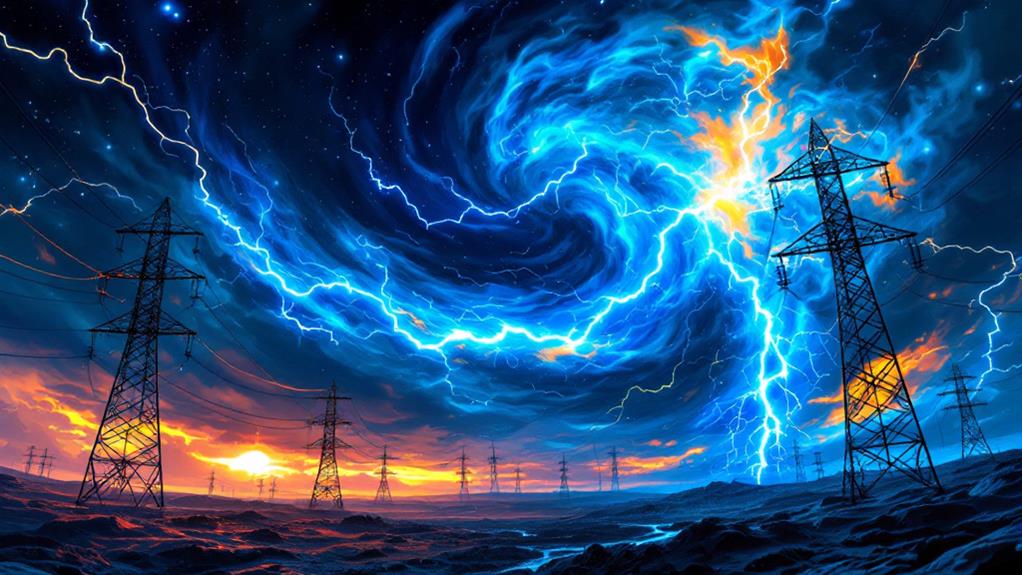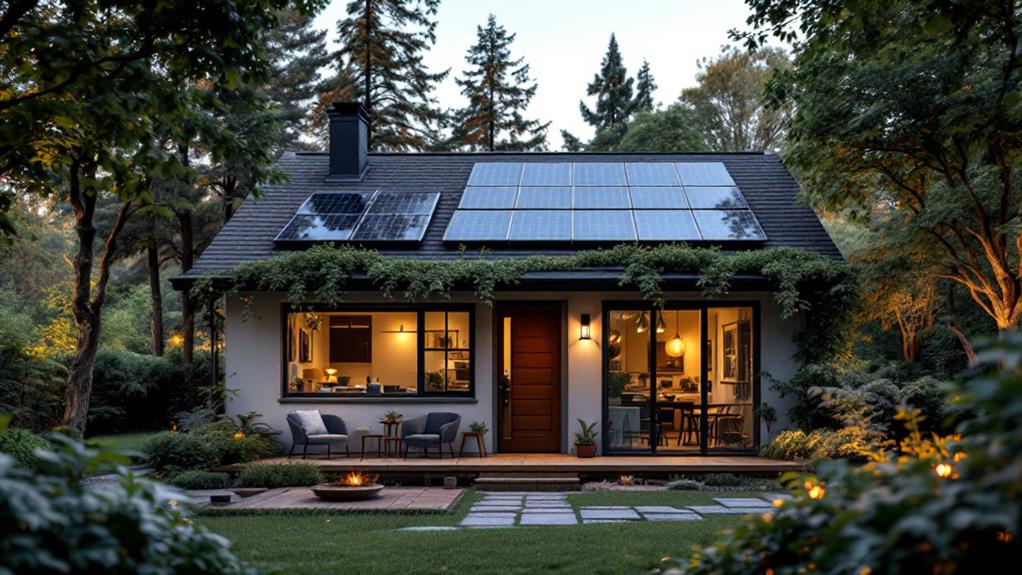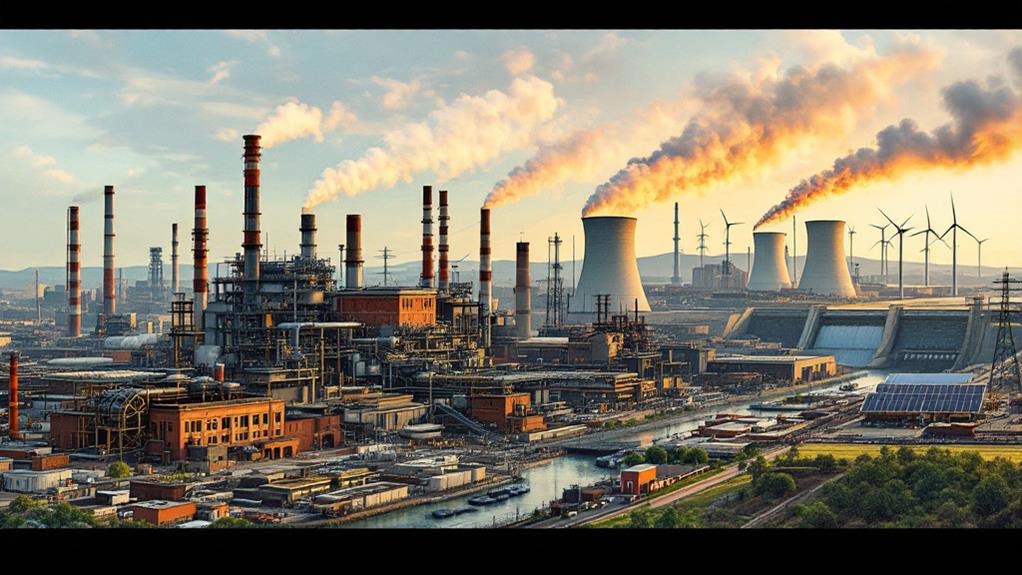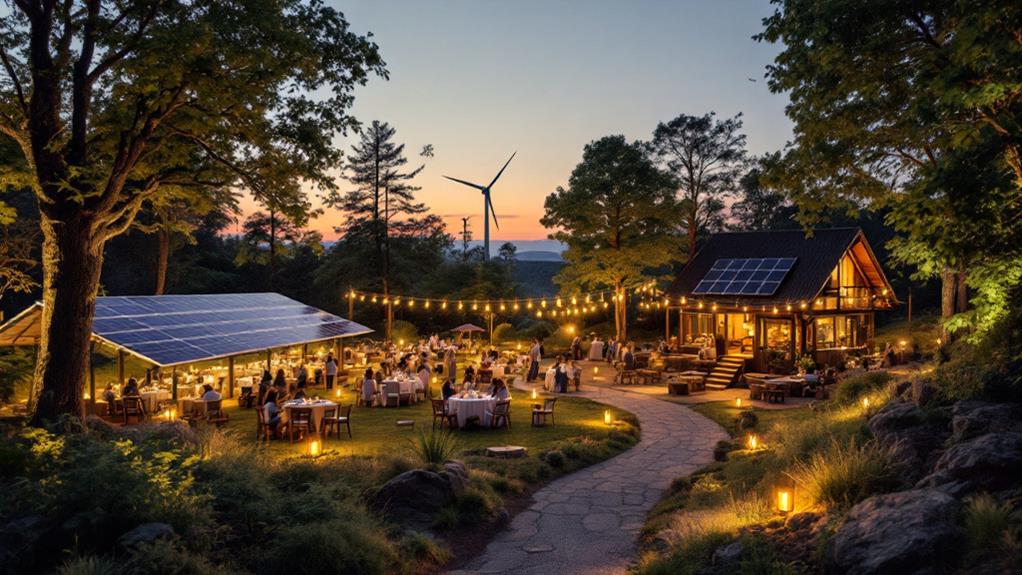All About Windmills: How They Work and Their Role in Energy Production
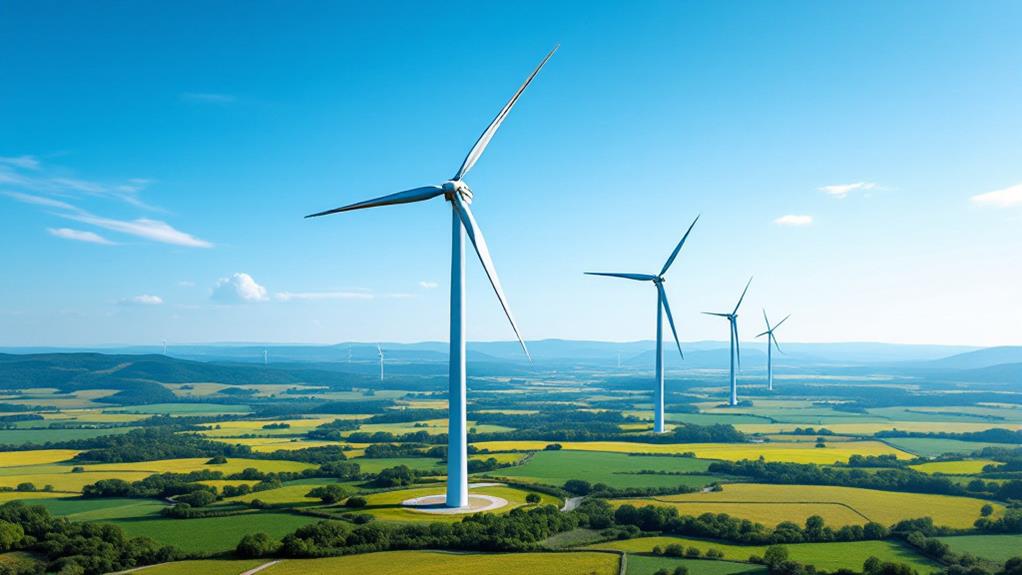
You'll find windmills fascinating, tracing back to ancient Persia for tasks like grinding grain. Modern windmills, or turbines, use aerodynamic blades capturing wind's kinetic energy, which turns rotors attached to gear systems and generates electricity. They come in horizontal and vertical designs, with onshore and offshore installations tapping into variable wind conditions. Their clean, renewable energy combats climate change and reduces reliance on fossil fuels, with continuous advancements in technology enhancing efficiency and reducing costs. Windmills aren't just a piece of history; they're an essential part of today's energy landscape, and there's plenty more you can uncover about their impact.
History of Windmills
The story of windmills begins in ancient Persia, where inventive minds harnessed the power of the wind to grind grain and pump water. You'd find that these early designs were quite ingenious, featuring vertical-axis structures with sails made of bundled reeds or cloth. These windmills played a significant role in the daily lives of Persians, providing a reliable method to process vital resources. As you investigate their history, you'll see how these early designs laid the groundwork for future innovations.
Windmills spread across cultures, each adapting the concept to their unique needs and environments. In the Middle Ages, Europeans accepted windmills, refining their design to include horizontal-axis structures. You might find it fascinating that windmills became more than just practical tools; they gained cultural significance, symbolizing technological advancement and human ingenuity. In places like the Netherlands, windmills became iconic, representing resilience against challenging natural elements.
Understanding the history of windmills helps you appreciate how they've shaped human progress. By recognizing their early designs and cultural significance, you gain insight into how these structures have evolved over centuries, influencing both agricultural practices and community identities worldwide.
Types of Windmills
Windmills come in different types, each serving distinct purposes and adapting to diverse environments. You'll find that the most common designs are the horizontal axis and vertical axis windmills. Horizontal axis windmills, which include both traditional windmills and modern turbines, are what most people picture. These are ideal for areas with steady winds. Vertical axis windmills, however, come in unique designs that work well in variable wind conditions, making them a versatile choice.
When thinking about onshore and offshore windmills, you'll notice that onshore windmills are located on land and are often easier to install and maintain. They're commonly seen in rural areas, where there's ample space and wind. Offshore windmills, on the other hand, are installed in bodies of water. They take advantage of stronger and more consistent winds over the ocean, though they require more durable windmill materials due to harsh marine conditions.
In terms of windmill materials, modern turbines often use lightweight, durable materials like composites and steel, which improve efficiency and longevity. Regardless of whether it's a traditional windmill or a cutting-edge modern turbine, each type has its specific role in harnessing wind energy effectively.
Mechanics of Windmills
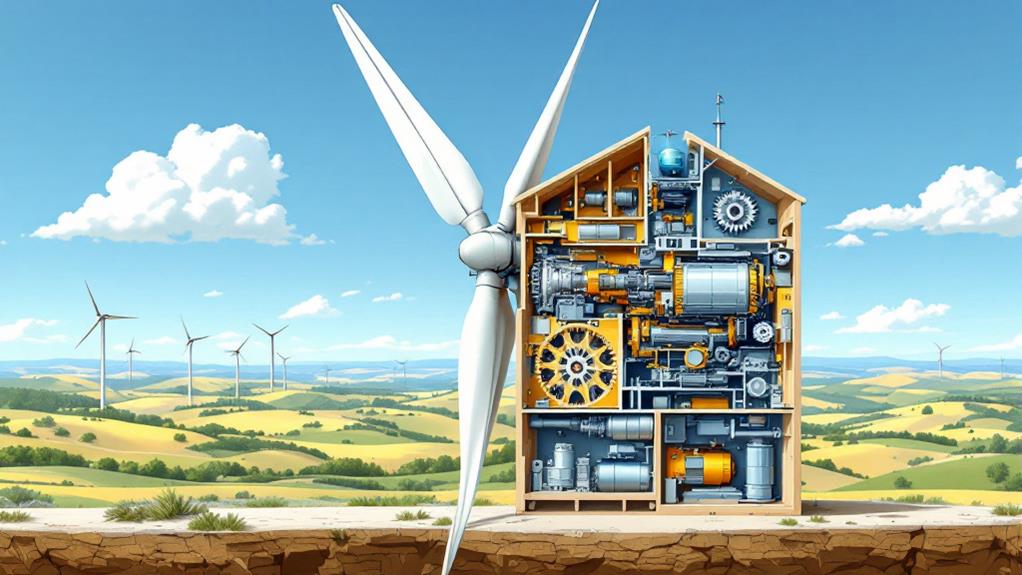
Understanding the mechanics of windmills begins with recognizing their basic components and how they work together to convert wind into energy. At the heart of a windmill is its rotor, which consists of blades designed with an aerodynamic design. These blades capture the kinetic energy of the wind, causing the rotor to spin. The effectiveness of a windmill greatly depends on the shape and angle of these blades, as they must efficiently slice through the air to optimize energy capture.
Once the rotor starts spinning, the motion is transferred to the shaft connected to a series of gear systems. These gear systems are vital because they increase the rotational speed before it reaches the generator. Without this step, the generator wouldn't be able to produce electricity efficiently. Here's how the process works:
- Aerodynamic Blades: Capture wind energy with precision.
- Shaft and Gear Systems: Transfer and amplify the rotor's motion.
- Generator: Converts mechanical energy into electrical energy.
Wind Energy Conversion
Harnessing the power of wind involves converting it into usable energy through an efficient system. When you stand before a towering wind turbine, you're witnessing a marvel of engineering designed to capture kinetic energy from the wind and turn it into electricity. At the heart of this process is wind turbine efficiency, a measure of how effectively a turbine converts wind energy into electrical power.
You might wonder how efficiency varies between onshore and offshore wind turbines. Offshore wind farms tend to enjoy steadier and stronger winds, which can greatly enhance efficiency compared to their onshore counterparts. This reliability in wind patterns means offshore turbines can produce more energy over time, making them an essential part of large-scale energy strategies.
To optimize efficiency, modern turbines use advanced materials and designs, including taller towers and longer blades, allowing them to capture more wind. They often feature sophisticated control systems that adjust the blade pitch and yaw to improve performance in varying wind conditions. As you investigate wind energy conversion, you'll see how vital it is to advancing our renewable energy goals and reducing reliance on fossil fuels. Understanding these systems empowers you to appreciate the role of wind in sustainable energy production.
Benefits of Wind Power
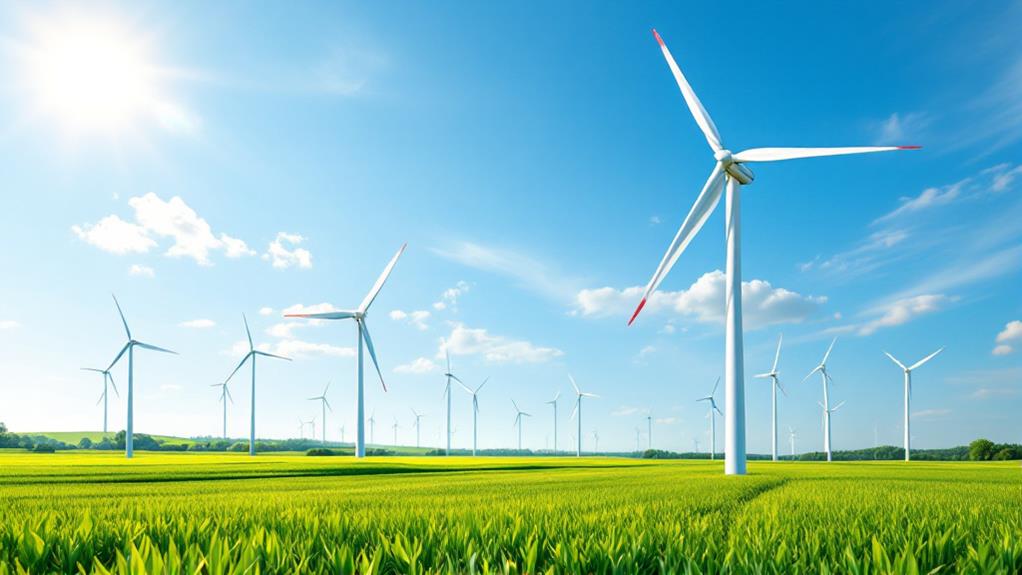
As you investigate the impressive technology behind wind energy conversion, you'll quickly recognize the numerous benefits wind power offers. It stands as a leading form of renewable energy, transforming how we meet our electricity needs. Wind power is not just about harnessing breezes; it's about tapping into a sustainable and abundant resource that can power millions of homes and businesses efficiently.
Here are three compelling benefits of wind power:
- Cost-Effectiveness: Once installed, wind turbines have low operational costs. You'll find that wind energy's cost per kilowatt-hour has dropped over the years, making it competitive with fossil fuels. This affordability makes wind power an attractive option for both individuals and governments.
- Energy Independence: By investing in wind power, you reduce reliance on imported fuels. It strengthens energy security by diversifying energy sources, ensuring that your community can have a more stable and self-sufficient power supply.
- Job Creation: The wind energy sector is booming, offering countless employment opportunities in manufacturing, installation, and maintenance. As countries expand their wind power infrastructure, you'll see an increase in demand for skilled workers, enhancing local economies.
Wind power's advantages make it a cornerstone of the renewable energy revolution, propelling progress toward a sustainable future.
Environmental Impact
You'll quickly realize that the environmental impact of wind power is remarkably positive compared to traditional energy sources. Windmills generate clean energy without emitting greenhouse gases, making them a sustainable choice in combating climate change. By choosing wind power, you're contributing to a reduction in air and water pollution, which are substantial issues with fossil fuel-based energy.
However, it's crucial to acknowledge some of the challenges windmills pose. One concern is their impact on biodiversity. Wind turbines can affect bird and bat populations if not carefully sited and monitored. To mitigate these biodiversity effects, developers often conduct thorough environmental assessments and implement measures like turbine curtailment during peak migration periods.
Another consideration is noise pollution. While wind turbines aren't silent, the noise they produce is often comparable to a refrigerator's hum. Advances in technology have considerably reduced this issue, and with proper placement away from residential areas, it becomes less of a concern.
Ultimately, the benefits of wind energy far outweigh its drawbacks. By choosing wind, you support a cleaner, greener future and help preserve the planet's delicate ecosystems for generations to come.
Economic Implications
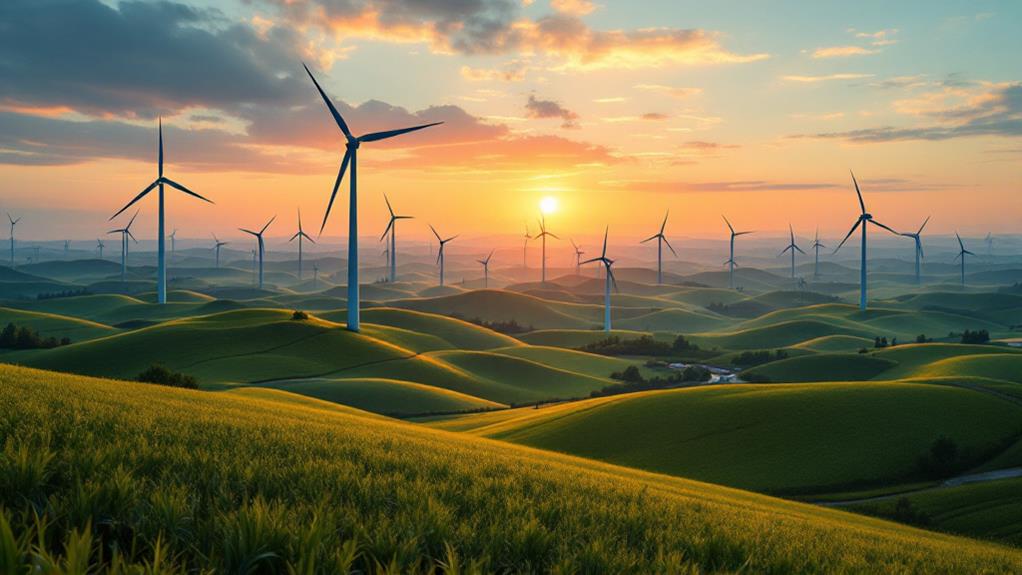
When you investigate the economic implications of wind energy, you'll find it's not just a win for the environment, but also for the economy. Wind energy's cost analysis reveals competitive pricing compared to fossil fuels, making it an attractive option for investors. As technological advancements drive down the cost of wind turbines, market growth accelerates, drawing significant investment trends. This growth fosters job creation, as the construction, maintenance, and operation of wind farms require skilled workers.
Energy independence is another vital benefit. By investing in wind energy, regions can reduce reliance on imported fuels, stabilizing energy costs and enhancing security. However, policy implications play a significant role in shaping these outcomes. Government incentives and regulatory frameworks can either strengthen or hinder wind energy's economic viability, underscoring the importance of supportive policies.
Regional differences also influence wind energy's economic impact. Areas with abundant wind resources naturally see more market activity, while regions with less potential may need further support. Here's a summary:
- Cost Analysis & Investment Trends: Lower costs and rising investments enhance wind energy's appeal.
- Job Creation & Energy Independence: New jobs and reduced fuel imports are key economic benefits.
- Policy & Regional Differences: Supportive policies and resource availability shape economic impacts.
Future of Wind Energy
While the present benefits of wind energy are clear, its future holds even greater promise. You're likely to see emerging technologies transforming how wind energy is harnessed. Innovations like floating wind farms and advanced turbine designs are becoming more feasible, allowing wind power to be generated in areas previously thought impossible. These developments can drastically increase the efficiency and reach of wind energy, making it a more integral part of the global energy mix.
Policy advancements play a vital role in shaping this future. Governments worldwide are beginning to recognize the necessity of shifting to cleaner energy sources. You'll notice more supportive policies that encourage investment in wind energy infrastructure and research. Tax incentives and subsidies are being introduced, making it easier for companies to invest in wind power projects.
Your role in this shift is significant too. By supporting initiatives and advocating for sustainable policies, you contribute to a cleaner energy future. As these technologies and policies evolve, wind energy will likely become even more cost-effective and widespread, providing a sustainable solution to meet growing energy demands. The future of wind energy looks bright, with endless opportunities for growth and innovation.
